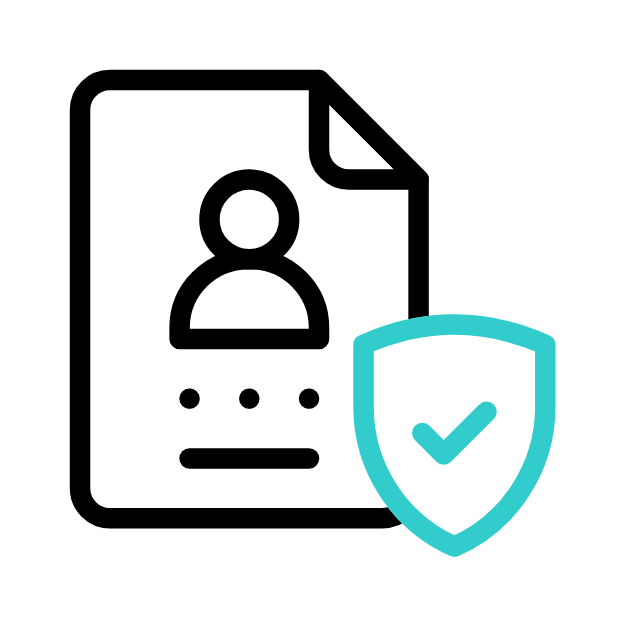FAST AND SIMPLE IDENTIFICATION AND MEASUREMENT OF PHOSALONE USING ION MOBILITY SPECTROSCOPY
Maqola haqida umumiy ma'lumotlar
Phosalone is a chemical compound used as a pesticide in agriculture and horticulture. Phosalone can be identified and measured with different devices in all kinds of agricultural and horticultural products. Despite the various methods of spectroscopy with various applications in the fields of chemistry and physics, it can be used to identify and measure a variety of chemical compounds. But the ion mobility spectrometer is a simple, low-cost method that does not require complex extraction methods to identify and measure organic compounds. With this research, the possibility of measuring Phosalone pesticide by ion mobility spectrometer in positive polarity was investigated. This test was performed without the need for complicated sample preparation steps. At first, the Phosalone standard sample was identified by the IMS device and the optimal conditions for its measurement were determined. The data was analyzed with SigmaPlot software. The optimal temperature of the tube was 200°C and the optimal temperature of the injection chamber was 260°C. The linear range for measuring Phosalone ppm was determined to be 0.5-20. The detection limit of 1.4 ppm and determination limit of 4.7 ppm was obtained.
1. Satterthwaite, D., G. McGranahan, and C. Tacoli, Urbanization and its implications for food and farming. Philosophical transactions of the royal society B: biological sciences, 2010. 365(1554): p. 2809-2820.
2. Conway, G., One billion hungry: can we feed the world? 2012: Cornell University Press.
3. Byrnes, B.H. and B.L. Bumb, Population growth, food production and nutrient requirements. Journal of crop production, 1998. 1(2): p. 1-27.
4. Pretty, J., Agricultural sustainability: concepts, principles and evidence. Philosophical Transactions of the Royal Society B: Biological Sciences, 2008. 363(1491): p. 447-465.
5. Godfray, H.C.J., et al., Food security: the challenge of feeding 9 billion people. science, 2010. 327(5967): p. 812-818.
6. Mahmood, I., et al., Effects of pesticides on environment. Plant, soil and microbes: volume 1: implications in crop science, 2016: p. 253-269.
7. Sundh, I. and M.S. Goettel, Regulating biocontrol agents: a historical perspective and a critical examination comparing microbial and macrobial agents. BioControl, 2013. 58: p. 575-593.
8. Ahmad, G., et al., Biological control: a novel strategy for the control of the plant parasitic nematodes. Antonie van Leeuwenhoek, 2021. 114(7): p. 885-912.
9. Hill, D.S., Agricultural insect pests of the tropics and their control. 1987: Cambridge University Press.
10. Tudi, M., et al., Agriculture development, pesticide application and its impact on the environment. International journal of environmental research and public health, 2021. 18(3): p. 1112.
11. Armenta, S., M. Alcala, and M. Blanco, A review of recent, unconventional applications of ion mobility spectrometry (IMS). Analytica chimica acta, 2011. 703(2): p. 114-123.
12. Kaur-Atwal, G., et al., Chemical standards for ion mobility spectrometry: a review. International Journal for Ion Mobility Spectrometry, 2009. 12: p. 1-14.
13. Sadat, S.A.A., V. Ilbeigi, Y. Valadbeigi, and M. Soleimani, Determination of pesticides phosalone and diazinon in pistachio using ion mobility spectrometry. International Journal for Ion Mobility Spectrometry, 2020. 23: p. 127-131.
14. Tabrizchi, M. and V. ILbeigi, Detection of explosives by positive corona discharge ion mobility spectrometry. Journal of hazardous materials, 2010. 176(1-3): p. 692-696.
15. Muir, D. and E. Sverko, Analytical methods for PCBs and organochlorine pesticides in environmental monitoring and surveillance: a critical appraisal. Analytical and bioanalytical chemistry, 2006. 386: p. 769-789.
16. Lehotay, S.J. and J.M. Cook, Sampling and sample processing in pesticide residue analysis. Journal of agricultural and food chemistry, 2015. 63(18): p. 4395- 4404.
17. Zhang, C., Fundamentals of environmental sampling and analysis. 2007: John Wiley & Sons.
18. Zhang, L., et al., A review of sample preparation methods for the pesticide residue analysis in foods. Central European Journal of Chemistry, 2012. 10: p. 900- 925.
19. Nasiri, M., H. Ahmadzadeh, and A. Amiri, Sample preparation and extraction methods for pesticides in aquatic environments: A review. TrAC Trends in Analytical Chemistry, 2020. 123: p. 115772.
20. Szultka, M., P. Pomastowski, V. Railean-Plugaru, and B. Buszewski, Microextraction sample preparation techniques in biomedical analysis. Journal of separation science, 2014. 37(21): p. 3094-3105.
21. Khademi, S. and S. Mohammad, Direct immersion-solid phase microextraction arrow-Corona discharge ion mobility spectrometry for determination of pesticides in environmental samples. Dissertation, Duisburg, Essen, Universität Duisburg-Essen, 2021.
22. Ilbeigi, V., Y. Valadbeigi, L.u. Slováková, and S. Matejcik, Solid Phase Microextraction–Multicapillary Column–Ion Mobility Spectrometry (SPME–MCC– IMS) for Detection of Methyl Salicylate in Tomato Leaves. Journal of Agricultural and Food Chemistry, 2022. 70(49): p. 15593-15601.
23. Valadbeigi, Y., V. Ilbeigi, W. Mamozai, and M. Soleimani, Rapid and simple determination of gabapentin in urine by ion mobility spectrometry. Journal of Pharmaceutical and Biomedical Analysis, 2021. 197: p. 113980.
24. Eiceman, G.A., Z. Karpas, and H.H. Hill Jr, Ion mobility spectrometry. 2013: CRC press.
25. Hill Jr, H.H., W.F. Siems, and R.H. St. Louis, Ion mobility spectrometry. Analytical Chemistry, 1990. 62(23): p. 1201A-1209A.
26. Vestal, M.L., Methods of ion generation. Chemical reviews, 2001. 101(2): p. 361-376.
27. Wittmer, D., Y.H. Chen, B.K. Luckenbill, and H.H. Hill, Electrospray ionization ion mobility spectrometry. Analytical Chemistry, 1994. 66(14): p. 2348- 2355.
28. Gabelica, V. and E. Marklund, Fundamentals of ion mobility spectrometry. Current opinion in chemical biology, 2018. 42: p. 51-59.
Danishyar, A. S., Karimi, M. N., & Sadat, S. A. (2023). FAST AND SIMPLE IDENTIFICATION AND MEASUREMENT OF PHOSALONE USING ION MOBILITY SPECTROSCOPY. Academic Research in Educational Sciences, 4(11), 250–260. https://doi.org/
Danishyar, Abdul , et al. “FAST AND SIMPLE IDENTIFICATION AND MEASUREMENT OF PHOSALONE USING ION MOBILITY SPECTROSCOPY.” Academic Research in Educational Sciences, vol. 11, no. 4, 2023, pp. 250–260, https://doi.org/.
Danishyar, S., Karimi, N., and Sadat, A. 2023. FAST AND SIMPLE IDENTIFICATION AND MEASUREMENT OF PHOSALONE USING ION MOBILITY SPECTROSCOPY. Academic Research in Educational Sciences. 11(4), pp.250–260.
 O'zbekcha
O'zbekcha English
English Русский
Русский


